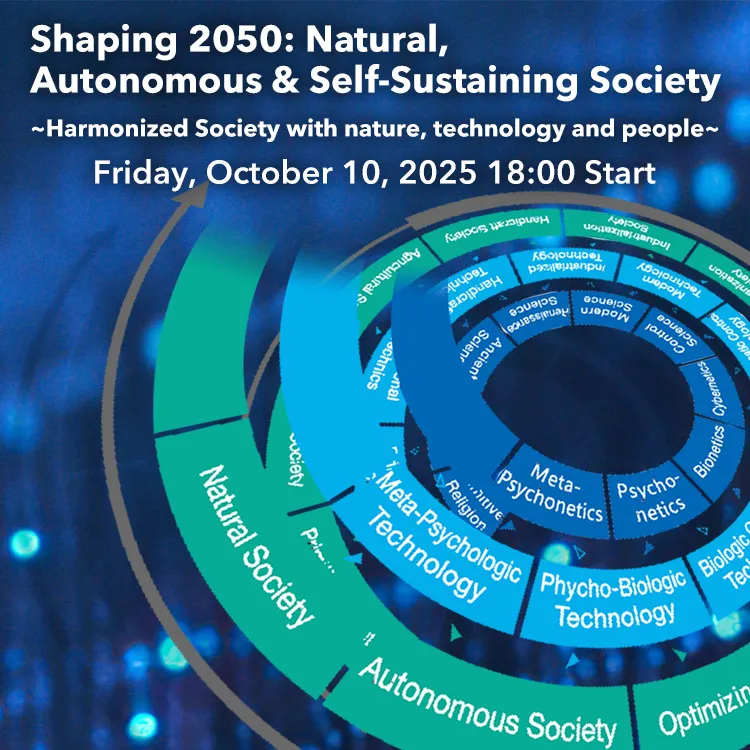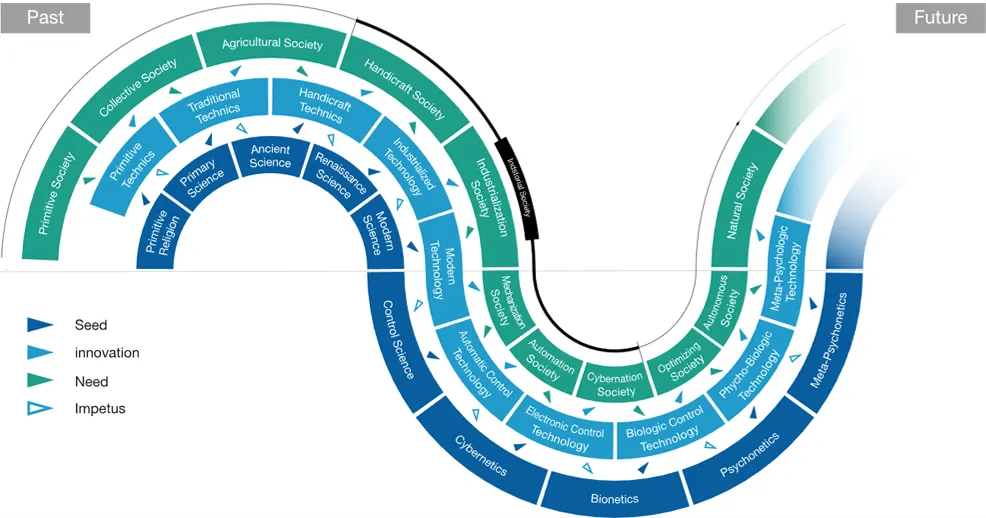
According to a significant theory, humanity is approaching the conclusion of the "first cycle" of social evolution.
What challenges and opportunities await human society in the future?
What is the "natural society," a vision where all forms of "control" are left behind?
The foundation of this event is the 'SINIC Theory,' a visionary framework for future prediction introduced by Kazuma Tateishi, the founder of OMRON, in 1970‚ÄĒthe same year Japan hosted EXPO '70. The theory predicted that society would evolve from the ‚Äúprimitive society‚ÄĚ of a million years ago, when people lived a hunting life, through the ‚Äúinformation society,‚ÄĚ to an ‚Äúautonomous society‚ÄĚ in 2025, where both people and machines cooperate autonomously and seek spiritual richness. This process was predicted as a cycle of social evolution. In recent years, this vision of the future has been attracting increasing attention from managers and researchers in the world who sympathize its vision. According to this theory, the year 2033 will mark the beginning of the second cycle of human society, the "natural society. The ‚Äúnatural society‚ÄĚ is a state in which human creativity and technology are in harmony with natural mechanisms. What kind of future is this ‚Äúnatural society‚ÄĚ in which we are freed from all kinds of controls? The Expo, the first in half a century in Japan, will explore the future of ‚Äúnatural society‚ÄĚ and beyond, just as we are entering an "autonomous society.

The SINIC Theory, proposed by Kazuma Tateishi, the founder of OMRON, is a model for future forecasting. It illustrates how science, technology, and society evolve in mutual interaction to anticipate societal needs and work toward a better future. Currently, OMRON is facilitating the transition from an "Optimization Society" to an "Autonomous Society," collaborating with companies and organizations to realize a sustainable society. By 2033, it is predicted that there will be a further shift toward a "Nature-Symbiotic Society," which will be in harmony with the natural world.